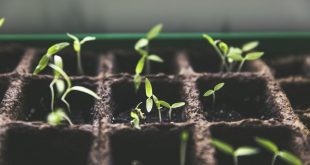This part of the series named ‘Difference Between’ contains the difference between the following topics of the course ‘The Principles of Crop Improvement’.
From syllabus Topic 1: Self incompatibility and cross incompatibility
- Protandry and Protogyny
- Self incompatibility (SI) and Coss incompatibility (CI)
- Gametophytic SI and Sporophytic SI
- Self incompatibility and Male sterility
- Self pollination and Cross pollination
From syllabus Topic 2: Male sterility systems
- Cytoplasmic MS and Genetic MS and Cytoplasmic-Genetic MS.
From syllabus Topic 3: Heterosis breeding
- Balanced heterosis and Mutational heterosis and Pseudo heterosis.
- Dominance and Over dominance hypothesis.
- Haploid breeding and Heterosis breeding
- Inbreeding depression and Heterosis
Best safe and secure cloud storage with password protection
Get Envato Elements, Prime Video, Hotstar and Netflix For Free
Best Money Earning Website 100$ Day
#1 Top ranking article submission website
From Topic 1
Self incompatibility and cross incompatibility
| Protandry | Protogyny |
| Male flowers mature prior to female flowers. | Female flowers mature prior to male flowers. |
| Or, in the same flowers pollens shed before the ovules are mature. | |
| Examples: Carrot (Daucus carota subsp. sativus) and Walnut. | |
| Similarities | |
| Ensure that self fertilization does not occur. | |
| Self incompatibility | Cross incompatibility |
| Power to reject its own pollen of similar genetic constituents. | Power to reject pollens of different genetic constituents. |
| Leads to variation. | Impedes the formation of variation. |
| Prevents inbreeding. | Promotes inbreeding. |
| Promotes out-crossing. | Prevents out-crossing. |
| genetically controlled by one or more multi-allelic loci. |
| Gametophytic SI (GSI) | Sporophytic SI (SSI) |
| Determined by the pollen’s own gametophytic haploid genotype. | Determined by the diploid genotype of the anther (the sporophyte) in which it was created. |
| This is the more common type of SI. | Less frequent than GSI. |
| Mechanisms: 1. The RNAase mechanism, 2. The S-glycoprotein mechanism | Mechanism: Up to this day, only one mechanism of SSI has been described in detail at the molecular level, in Brassica (Brassicaceae). |
| Self incompatibilty | Male sterility |
| Power to reject its own pollen of similar genetic constituents. | Situation whereby individuals of a normally hermaphrodite plant species have only functional pistil and non functional pollen (if produced). |
| Pollens are produced but are rejected upon pollination. | Unable to produce or release pollen. |
| Reason: Genetically controlled one or more multi-allelic loci. | Reason: Failure of formation or development of functional stamens, microspores or gametes |
| Can not be assayed through staining technique. | Assayed through staining technique. |
| Similarities | |
| Leads to heterozygosity | |
| Leads to cross pollination | |
| Self pollination | Cross pollination (Allogamy) |
| Pollination of a flower by pollen from the same flower (autogamy) or from another flower on the same plant (geitonogamy). | Occurs when pollen is delivered from the stamen of one flower to the stigma of a flower on another plant of the same species. |
| Pollen and pistil have same genetic make-up. | Pollen and pistil have different genetic make-up. |
| Increases homozygosity. | Increases heterozygosity. |
| Impossible to happen in dioeceous plants. | Must occur in dioeceous plants. |
| Doesn’t create variations. | Creates variations. |
From Topic 2
Male sterility systems
| Cytoplasmic MS | Genetic MS | Cytoplasmic-Genetic MS |
| Governed by cytoplasmic genes. | Governed by nuclear genes. | Governed by interactions between cytoplasmic and nuclear genes. |
| Shows maternal inheritance. | ||
| Applicable where grains or fruits are not economic products i.e ornamental and vegetatively propagated crops. | Applicable for both the vegetatively propagated crops and crops required for fruits or seed production. | Used in commercial production of hybrid seeds in maize, sorghum and bajra. |
| Generally caused by recessive alleles. | Caused by homozygous recessive genes in presence of sterile cytoplasm and fertility is restored by the dominant allele in presence of fertile as well as sterile cytoplasm. | |
| Examples: Sugarcane, potato etc. | Examples: Wheat, maize, barley, tomato etc. | Examples: Maize, rice, sunflower etc. |
From Topic 3
Heterosis breeding
| Balanced heterosis | Mutational heterosis | Pseudo heterosis |
| Dominance hypothesis | Over dominance hypothesis |
| Haploid breeding | Heterosis breeding |
| Inbreeding depression | Heterosis |
Best safe and secure cloud storage with password protection
Get Envato Elements, Prime Video, Hotstar and Netflix For Free
 Plantlet The Blogging Platform of Department of Botany, University of Dhaka
Plantlet The Blogging Platform of Department of Botany, University of Dhaka




